-
 About USTRANSCOM
About USTRANSCOM
-
 Organizational Structure
Organizational Structure
- TCCC - Commander Staff and Direct Reporting Elements
- TCAC - Joint Distribution Process Analysis Center
- TCAQ - Directorate of Acquisition
- TCJA - Staff Judge Advocate
- TCSG - Command Surgeon
- TCJ1 - Manpower and Personnel
- TCJ2 - Intelligence Directorate
- TCJ3 - Operations and Planning
- TCJ5/4 - Strategy, Policy, Programs and Logistics
- TCJ6 - Command, Control, Communications and Cyber Systems
- TCJ8 - Program Analysis and Financial Management
- TCJ9 - Reserve Component Directorate
-
 News
News
-
 Defense Transportation Regulations
Defense Transportation Regulations
-
 Associated Websites
Associated Websites
-
 Publications
Publications
USTRANSCOM History
Timeline
General Duane H. Cassidy
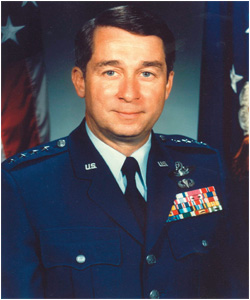
Timeline | Oral History
On 18 April 1987, acting on the recommendation of the President's Blue Ribbon Commission on Defense Management, President Ronald Reagan ordered the establishment of USTRANSCOM. After decades of studies, hearings, reports, and commissions, the nation finally had a unified command to serve as the single advocate for the Defense Transportation System. President Reagan nominated, and the Senate confirmed, Air Force General Duane H. Cassidy to be the first Commander in Chief of USTRANSCOM.
General Hansford T. Johnson

Timeline | Oral History
Establishment of USTRANSCOM in 1987 was a signal event in the history of defense transportation, but compromises had been made to bring it into existence. The Services retained their single manager charters for air, land, and sea transportation, and USTRANSCOM's responsibilities were largely restricted to wartime. These shortcomings would be rectified during Air Force General Hansford T. Johnson's assignment as USTRANSCOM Commander in Chief.
General Ronald R. Fogleman
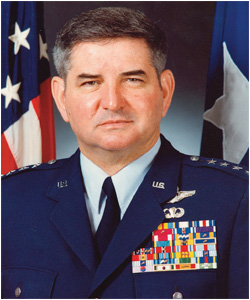
Timeline | Oral History
Air Force General Ronald R. Fogleman's top priority as USTRANSCOM Commander in Chief was to prepare the command to exercise the authorities and responsibilities Secretary of Defense Richard B. Cheney had given it in February 1992: to execute air, land, and sea transportation for the Department of Defense (DOD) in peace and war.
General Robert L. Rutherford
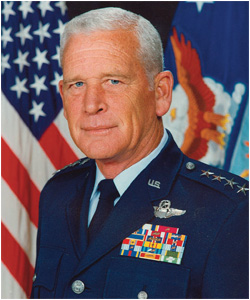
Timeline | Oral History
As Commander in Chief of USTRANSCOM, Air Force General Robert L. Rutherford's focus was to increase the command's efficiency without decreasing its warfighting effectiveness. "The strategic plan had been laid out," he said. "The structure was in place, good people were in place. We needed to make sure we had it resourced properly."
General Walter Kross
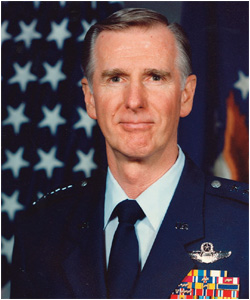
Timeline | Oral History
Air Force General Walter Kross was the first Commander in Chief, USTRANSCOM, to have served previously in the command: he was Director, Operations and Logistics during the Persian Gulf War. Shortly after assuming command, he told the USTRANSCOM staff he felt like someone who had worked in the family business, gone away to serve in the armed forces, and "I then came back to run the family business, but everything had changed."
General Charles T. Robertson, Jr.
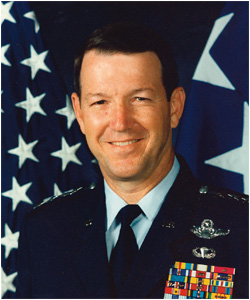
Timeline
Two terrorist events framed the tenure of Air Force General Charles T. "Tony" Robertson, Jr., as USTRANSCOM Commander in Chief: the simultaneous bombings of the US embassies in Nairobi, Kenya, and Dar es Salaam, Tanzania; and the deadliest domestic terrorist attacks in US history that occurred on 11 September 2001.
General John W. Handy

Timeline
Air Force General John W. Handy brought clear-cut visions as Commander of both USTRANSCOM and Air Mobility Command (AMC). Consequently, USTRANSCOM experienced more change, received more authorities, and launched more initiatives than at any time since its creation while sustaining a high operating tempo.
General Norton A. Schwartz

Timeline
Two objectives characterized Air Force General Norton A. Schwartz's tenure as the first full-time Commander of USTRANSCOM: continue to advance the many initiatives already underway and run the command more like a business.